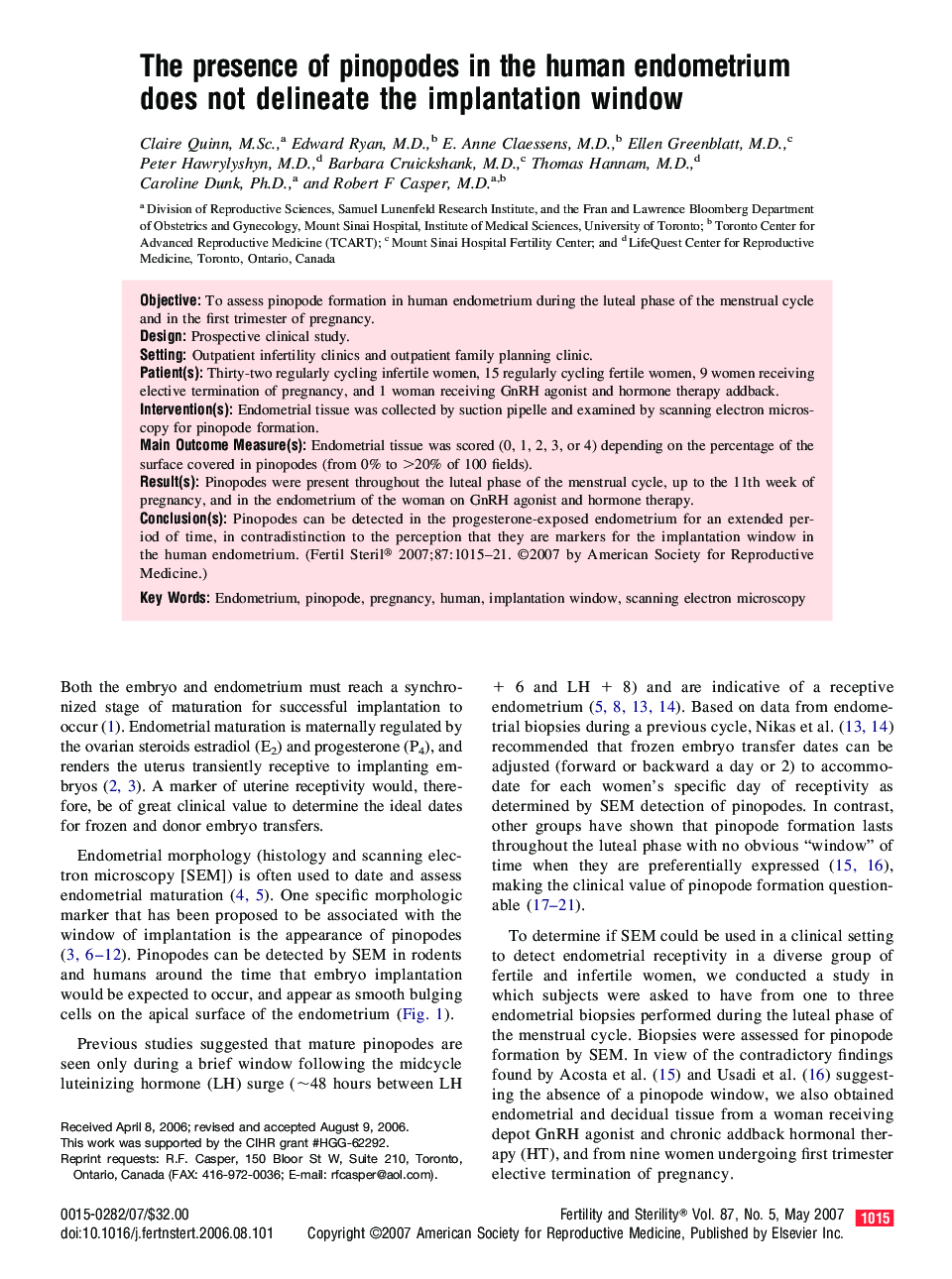| Article ID | Journal | Published Year | Pages | File Type |
|---|---|---|---|---|
| 3936025 | Fertility and Sterility | 2007 | 7 Pages |
ObjectiveTo assess pinopode formation in human endometrium during the luteal phase of the menstrual cycle and in the first trimester of pregnancy.DesignProspective clinical study.SettingOutpatient infertility clinics and outpatient family planning clinic.Patient(s)Thirty-two regularly cycling infertile women, 15 regularly cycling fertile women, 9 women receiving elective termination of pregnancy, and 1 woman receiving GnRH agonist and hormone therapy addback.Intervention(s)Endometrial tissue was collected by suction pipelle and examined by scanning electron microscopy for pinopode formation.Main Outcome Measure(s)Endometrial tissue was scored (0, 1, 2, 3, or 4) depending on the percentage of the surface covered in pinopodes (from 0% to >20% of 100 fields).Result(s)Pinopodes were present throughout the luteal phase of the menstrual cycle, up to the 11th week of pregnancy, and in the endometrium of the woman on GnRH agonist and hormone therapy.Conclusion(s)Pinopodes can be detected in the progesterone-exposed endometrium for an extended period of time, in contradistinction to the perception that they are markers for the implantation window in the human endometrium.
